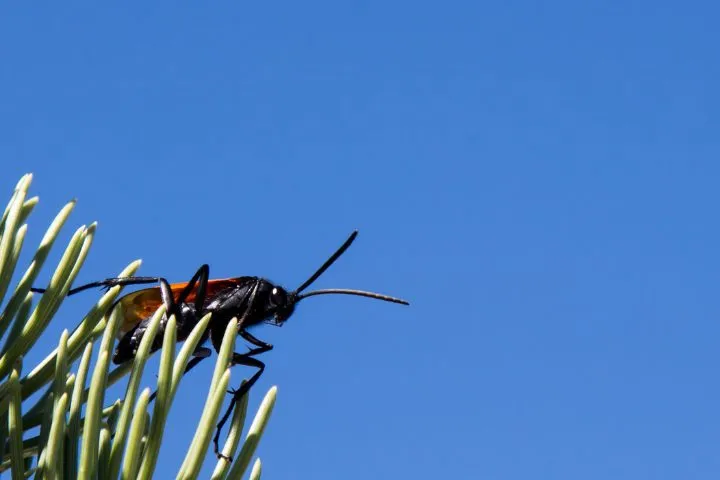The world of insects is full of fascinating creatures, and among the most intriguing, and often feared, are hornets and wasps. Both belong to the order Hymenoptera, but they differ significantly in various aspects. This article delves into a detailed comparison of two formidable insects: the Japanese giant hornet (Vespa mandarinia japonica) and the tarantula hawk wasp (Pepsis grossa), exploring their characteristics, behavior, and the level of danger they pose. Determining which is more dangerous is not straightforward, as it depends on various factors, including their physical attributes, venom potency, and behavioral traits. Join us as we uncover the key differences and similarities between these stinging insects.
Japanese Giant Hornet vs Tarantula Hawk Wasp Overview
Before we delve into the nitty-gritty of their differences, let’s get a brief overview of each insect. The Japanese giant hornet is the world’s largest hornet species, known for its formidable size and aggressive nature. The tarantula hawk wasp, on the other hand, is a solitary wasp species famed for its incredibly painful sting and its unique parasitic relationship with tarantulas. Both insects possess a potent sting, but their overall threat to humans varies based on their venom, behavior, and habitat.
Physical Characteristics Hornets
Size and Appearance
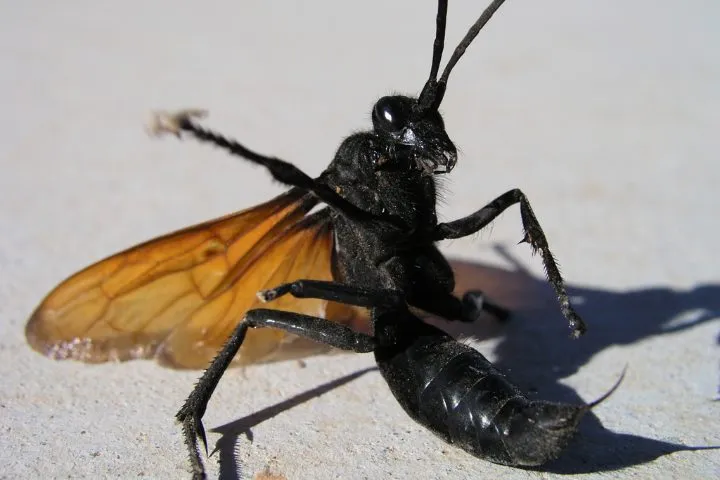
The Japanese giant hornet is a giant insect, with workers typically reaching 1.6 inches in length, and queens can grow up to 2 inches long. They have a distinct appearance with a large head, powerful mandibles, and a black and yellow striped abdomen. Their size alone makes them intimidating. This hornet’s large size is a significant factor in the amount of venom it can inject. They are easily recognizable due to their size and the distinctive yellow and black stripes, which serve as a warning to potential predators.
Nesting Habits
Japanese giant hornets build large nests, often in underground locations like tree roots or the burrows of other animals. These nests can house thousands of individuals, making them a potential threat if disturbed. These nests are usually well-hidden, which makes them difficult to detect. The size of the nests contributes to their potential for causing harm, as a disturbed nest can result in a large number of hornets attacking at once. Their nests are often constructed from chewed wood pulp, creating a paper-like material.
Physical Characteristics Wasps
Size and Appearance
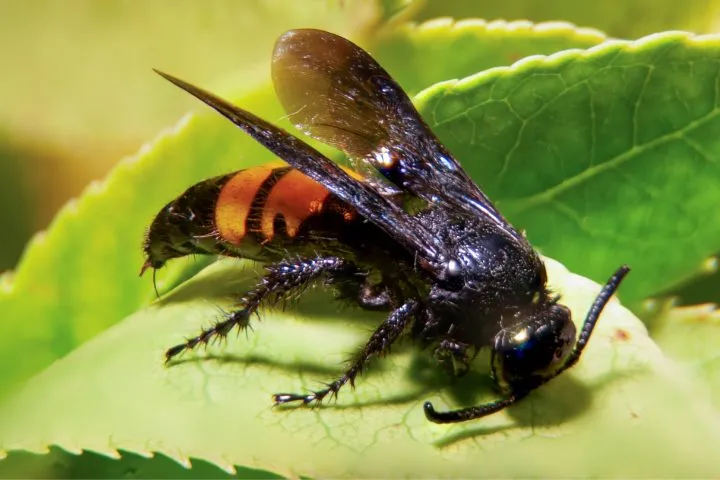
The tarantula hawk wasp is also large, but somewhat slender compared to the hornet, with bodies typically reaching up to 2 inches long. They have a striking appearance with a black or dark blue body and orange or rust-colored wings. Their overall appearance is designed for their role as a predator and parasite, with long legs adapted for digging and maneuvering. These wasps are built for a life of hunting and parasitism, which influences their behavior and the kind of danger they pose.
Nesting Habits
Unlike the social Japanese giant hornets, tarantula hawk wasps are solitary. They dig burrows in the ground where they will lay their eggs. Their nests are much simpler, as they are essentially individual cells. The female wasp hunts and paralyzes a tarantula, dragging it into the burrow, where she lays a single egg on the tarantula’s abdomen. After the egg hatches, the wasp larva feeds on the paralyzed tarantula. This behavior is very different compared to hornets, and their solitary nature influences their behavior.
Sting and Venom Analysis
Japanese Giant Hornet Sting Potency
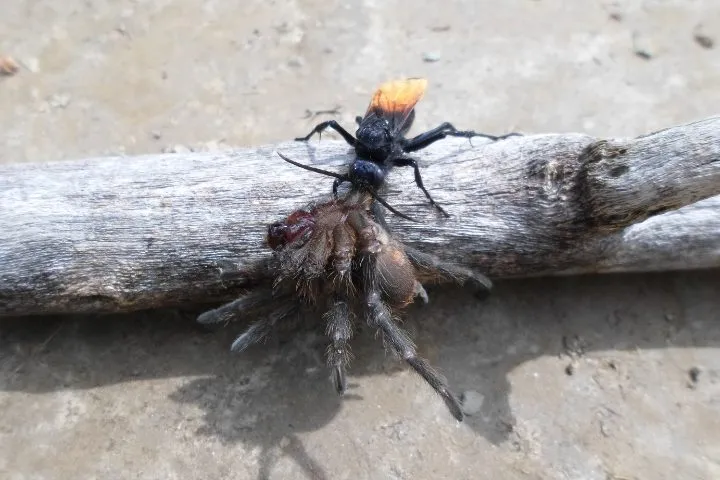
Toxicity and Effects
The Japanese giant hornet’s sting is known to be highly potent. Their venom contains a mix of toxins that can cause severe pain, swelling, and even systemic reactions in sensitive individuals. Multiple stings can be particularly dangerous, as they can lead to organ damage and even death. The venom is delivered through a large stinger, which allows them to inject a significant amount of venom with each sting. These stings also release pheromones that alert other hornets in the area, resulting in mass attacks.
Tarantula Hawk Wasp Sting Potency
Toxicity and Effects
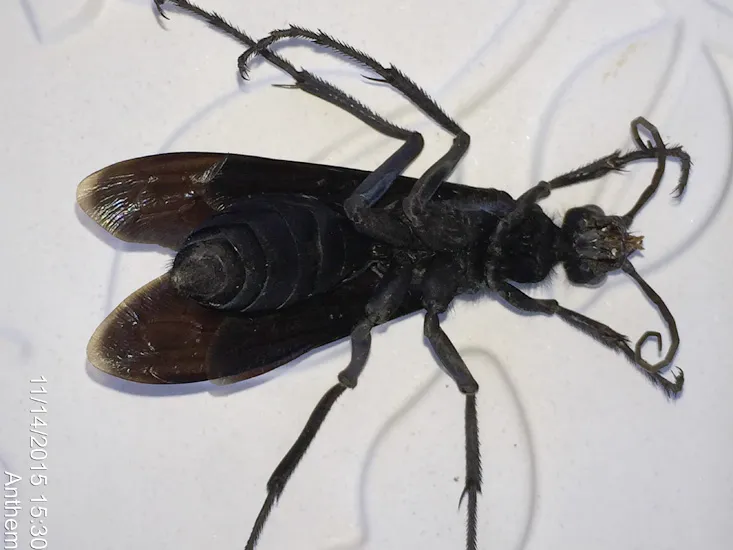
The tarantula hawk wasp is famous for its extremely painful sting. While the venom is not as toxic as the Japanese giant hornet’s venom, the pain is considered among the worst of any insect sting. The sting is described as a searing, excruciating pain that can last for several minutes. It’s not necessarily the most lethal, but it is undoubtedly one of the most painful. The intensity of the pain is a significant factor when evaluating their level of danger, as it can cause significant distress and is known for its lasting effect.
Behavior and Aggression Levels
Japanese Giant Hornet Behavior
Aggression and Defense
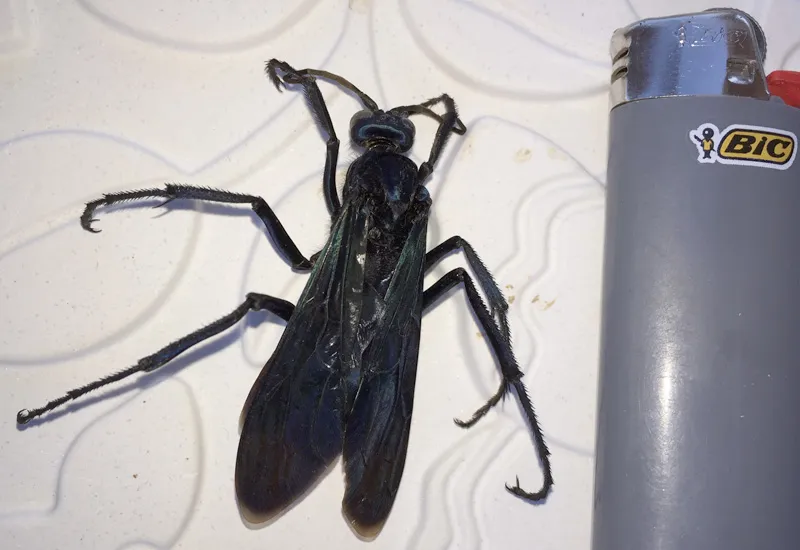
Japanese giant hornets are highly aggressive, especially when defending their nests. They can attack in large numbers if they perceive a threat. Their aggression is one of the key reasons they are considered dangerous. They are known for their coordinated attacks, often targeting the eyes and face. This aggressive behavior, combined with their powerful stings, makes them a significant threat. These hornets can also be triggered by movement, vibrations, and the presence of other insects.
Tarantula Hawk Wasp Behavior
Aggression and Defense
Tarantula hawk wasps are generally less aggressive towards humans unless provoked. Their primary goal is to hunt tarantulas. However, if they feel threatened, they will sting. Their aggression is driven by self-preservation or defending their space. Since they are solitary, they do not attack in swarms, which means their sting is usually less severe than an attack by multiple hornets. They are known for their defensive behavior, and their sting is intended for self-defense.
Habitat and Geographic Distribution
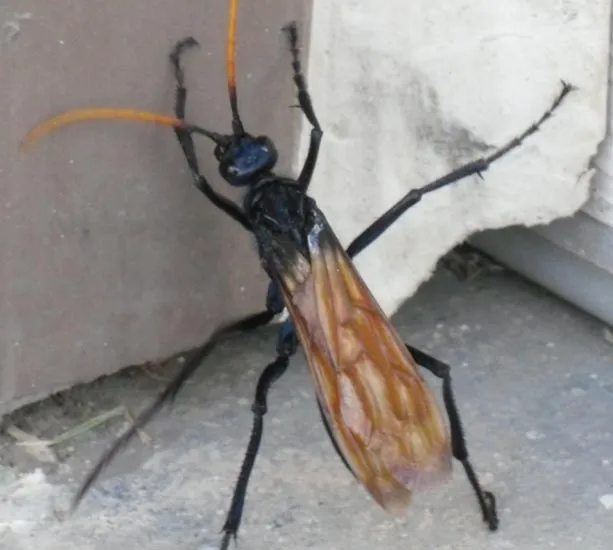
Japanese Giant Hornet Habitat
Geographic Range
Japanese giant hornets are native to East Asia, including Japan, Korea, and parts of Russia. They typically inhabit forests, mountains, and rural areas. The presence of their nests in residential areas poses a particular threat to humans. They thrive in environments with ample food sources and suitable nesting sites. Their distribution is primarily concentrated in Asia, and their impact is most significant in the regions where they are prevalent.
Tarantula Hawk Wasp Habitat
Geographic Range
Tarantula hawk wasps are found in various regions, including the southwestern United States, South America, and parts of Australia. They prefer arid or semi-arid environments where tarantulas are abundant. Their habitat selection is directly influenced by their need for tarantulas to serve as hosts for their larvae. Their distribution varies but is found across several continents, and they prefer areas where tarantulas are abundant. They are often seen in deserts and other warm, dry environments.
Comparing the Dangers
Overall Danger Assessment
Determining which insect is more dangerous is complex. The Japanese giant hornet’s potential to deliver multiple stings, combined with its potent venom and aggressive behavior, makes it a significant threat. However, the tarantula hawk wasp’s sting, while not as toxic, is notoriously painful, leading to intense distress. When considering overall danger, several factors contribute to the final assessment. Both insects pose risks, but in different ways.
Factors Influencing Danger
The level of danger depends on the circumstances. For example, the Japanese giant hornet’s social behavior, allowing for mass attacks, is a significant factor. The tarantula hawk wasp’s solitary nature often limits the impact of its sting, although the pain is intense. The context of the interaction is crucial – for instance, accidentally disturbing a hornet nest is much more dangerous than encountering a single wasp. Other factors, such as allergic reactions and the number of stings, heavily influence the outcome.
Conclusion Hornet vs Wasp
Both the Japanese giant hornet and the tarantula hawk wasp are formidable insects, capable of inflicting considerable harm. While the Japanese giant hornet’s aggressive behavior and potent venom may make it more dangerous overall, the tarantula hawk wasp’s sting offers an exceptionally painful experience. Ultimately, the question of which is more dangerous depends on how we measure danger—severity of the sting, the probability of multiple stings, and the potential for allergic reactions. Both insects should be treated with respect and caution. Understanding their behaviors, habitats, and the potential dangers they present helps in minimizing risks. Remember to avoid disturbing their nests or attempting to handle them. If you encounter either insect, it is best to observe them from a distance or, if necessary, contact a professional for removal.
